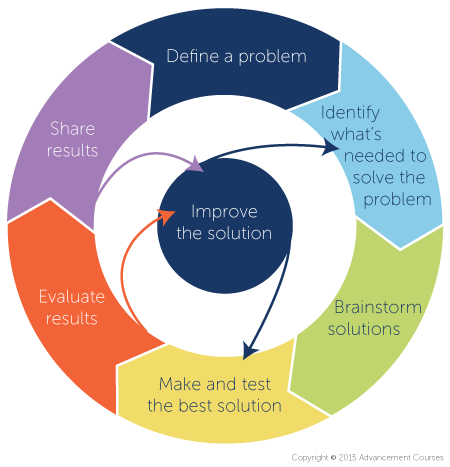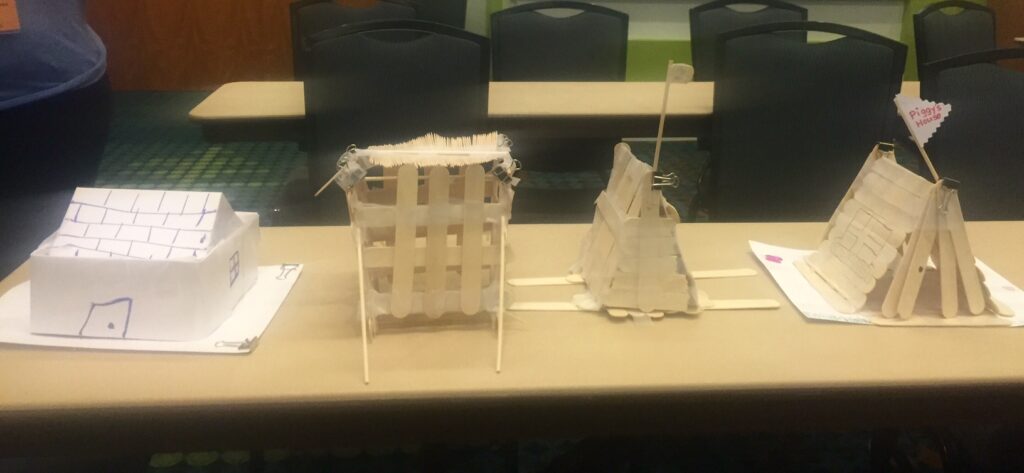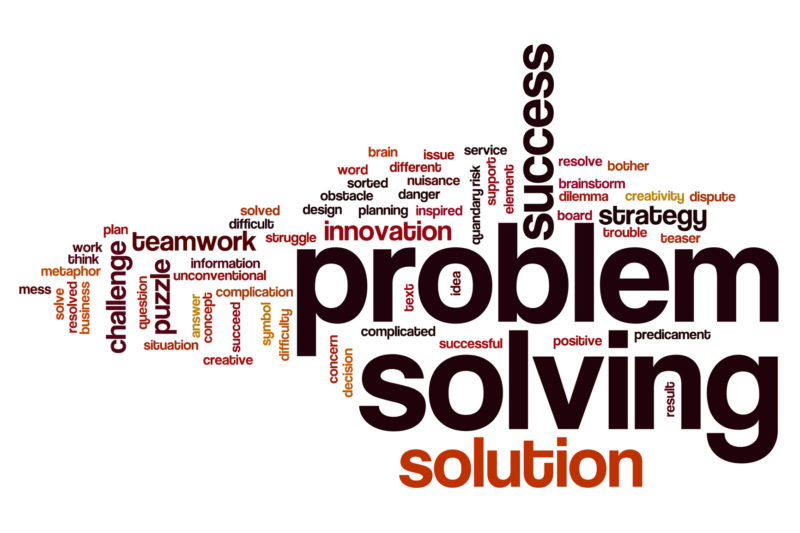A few weeks ago, a couple members of the Advancement Courses team attended the National Science Teachers Association’s (NSTA) annual conference. In addition to meeting thousands of excellent educators, the team had the chance to conduct a Problem-Based Learning (PBL) demo. Read on to learn more about the demo and how you can apply it in your classroom.
PBL with Fairytales and Fables
The engineering design process is an effective way to engage students of all grade levels in hands-on, problem-based learning that promotes STEM thinking. Sometimes, though, it can be difficult to think of unique and interesting topics to get your students excited about the work.
Enter the story of The Three Little Pigs.
You can use the story of The Three Little Pigs (or just about any fable or fairytale) to design your own PBL STEM project that will not only be interesting for your students, but will also teach them important 21st century STEM skills that will benefit them for life.
Here’s one example of how to use the engineering design process with the story of The Three Little Pigs in your STEM lessons across grade levels.
Problem-Based Learning With The Three Little Pigs
Introduce your students to the story of The Three Little Pigs. Then, walk them through the following steps:

1. Define a problem:
The three little pigs need to build a home that can withstand the big bad wolf’s huffing and puffing.
2. Identify what is needed to solve the problem:
The pigs will need building materials that are solid enough to protect them from the wolf.
3. Brainstorm solutions
Students break into groups and choose their building materials (construction paper, toothpicks, popsicle sticks, binder clips, glue, scotch tape, markers, and scissors). Students then brainstorm how to build the sturdiest home.
4. Create and test the best solution:
Students build the product and then test it using a mid-sized fan on low, medium, and high settings (i.e., the big bad wolf’s intensifying huffing and puffing).
5. Evaluate results:
Students collaborate as a team to figure out what changes need to be made to make their home sturdier.
6. Improve the solution:
They then make any necessary revisions to their product.
7. Share results:
At the end of class, each group has an opportunity to test their product against the fan at high power and explain their brainstorming and building process.
The educators who attended the workshop at NSTA loved learning how to use fables and fairytales to implement inquiry-based STEM instruction. Below are the innovative, sturdy, and quirky structures each of the groups built, all of which passed the test from the “big bad wolf.”

To make this activity more challenging for older grades, or to extend the learning across subjects, you can make the following changes:
Modifications and Connections Across Content Areas
- Limit the number of materials students can use to build their structure, or give them a budget when purchasing materials. (Older/gifted students)
- Set up a store so younger students can practice financial literacy and math skills as they purchase building materials. (Math)
- Connect building materials to regional natural resources and discuss how the climate/topography of an area might affect the kinds of structures people build. (Science/Social Studies)
- Ask students to develop blueprints or sketches of their structures before building them by using free digital tools or modeling software. (Technology/Art)
- Introduce vocabulary to support literacy skills and encourage students to develop their own endings to the fairytales. (ELA)
- Ask students to develop arguments as to why they chose certain materials and use evidence to support their claims. (ELA)






